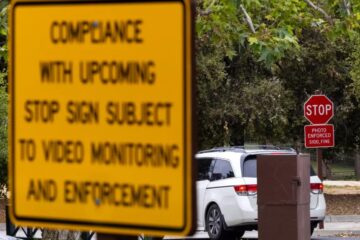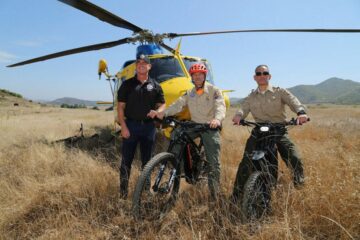Know your trail etiquette?
Common sense is the rule of the off-road
Source of this article: The Thousand Oaks Acorn, June 25, 2015
With hundreds of miles of walking, cycling and equestrian paths, the Santa Monica Mountains and Ventura County backcountry are a magnet for people who enjoy the outdoors.
But the trails can be a source of conflict between leisure users and thrill seekers.
“ Loving the outdoors has become hazardous to my health,” said horseback rider Robin Targon, who recently had an on-the-trail run-in with a mountain biker.
Targon said she and a friend were riding their horses in the Upper Las Virgenes Canyon Open Space Preserve near Hidden Hills when the cyclist barreled toward them at a high rate of speed.
In an effort to get his attention, the equestrians stopped and put their hands up, beckoning for the cyclist to slow down. But he didn’t seem to care, Targon said.
“He finally slowed just a bit . . . enough to shout expletives at us. . . . That bike rider put my life, my friend’s life and our horses at great risk,” she said, adding that she had also been charged by unleashed dogs during an outing two months earlier.
“Sitting on a horse that weighs over 1,300 pounds . . . you never know what will set them off,” Targon said. “We know a woman was dumped off her horse when a dog charged. She was airlifted out of Ahmanson.”
But with about 33 million visitors to the Santa Monica Mountains National Recreation Area each year, complaints are also heard about self-centered equestrian owners.
In addition to rangers who patrol the trails year-round in vehicles and on foot, the park agencies use volunteer equestrian and mountain bike riders to enforce trail rules.
The National Park Service also teams with the Concerned Off-Road Bicyclists Association (CORBA) to promote safe and courteous riding in the Santa Monica Mountains.
Mark Langton, a board member for CORBA who also teaches mountain biking skills, said bicyclists, hikers, dog walkers and horseback riders all have a right to share the trails—but not everyone is aware of how to do so safely.
The speed limit for bikes on all park roads and trails is 15 miles per hour, but speed is subjective, and what one person may consider slow might still be too fast, Langton said.
“Even at 10 mph, a cyclist can startle someone and disrupt their enjoyment of our open space,” said Langton, chair of the Conejo Open Space Trails Advisory Committee.
Communicate with Each Other According to the rules of the trail, horses always have the right of way. Because the animals may startle at loud noises and sudden movements, hikers and bike riders are advised to approach the animals carefully and give them space.
Others say the courtesy is a twoway street and that equestrians who are trotting or galloping on open trails should slow down when approaching hikers and bikers.
Langton says cyclists would face less animosity if they slowed down and use a bell while riding on the trail.
“It’s important to be heard even if you’re not seen. . . . The bell should ring constantly. That’s probably one of the best things that you can do to alert people of your presence,” Langton said, adding that cyclists who like to go fast should ride during the week when trails are less crowded.
Local cyclist Jack Rifenbark, said equestrians have a responsibility to consider the temperament of their horses before they take them out on public paths.
“For example, my dog is not safe around other dogs, therefore I don’t take him to the dog park. Bringing a horse to multiuse trails is like taking my dog to the park and then blaming others for not tip-toeing around his special sensitivities,” Rifenbark said on the Acorn’s Facebook page.
“Of course, that doesn’t excuse irresponsible riding by some cyclists,” he added.
Conflicts on the trail often mirror those that occur on the canyon roads between cars, motorcyclists and bicyclists.
Agoura Hills resident and longtime equestrian Larry Brown said nearly all mountain bikers he encounters on the trail are courteous and slow down for him and his mount.
“This is pretty much a nonissue with all but a tiny handful of jerks on bicycles and nervous equestrians who are afraid of their horses and probably should not be on the trails in the first place,” Brown said.
Kate Kuykendall, spokesperson for the Santa Monica Mountains National Recreation Area, said her agency often receives complaints about bikes going too fast at Cheeseboro/Palo Comado canyons and other areas. Park officials plan to focus enforcement and public education efforts on the Cheeseboro area in the coming year.
David Szymanski, superintendent for the National Recreation Area, said one of the most important things park visitors can do for each other is to follow the “yield triangle,” which says cyclists should yield to pedestrians and equestrians, and hikers should yield to horses.
“Acknowledge each other and be prepared to slow down, stop or walk in certain circumstances,” Szymanski said.
Most trails in the National Park Area are open to many types of traffic, but there are a number of places in the mountains where bikes are not allowed.
Leashed dogs are allowed in national parks and other public lands, but they are not permitted on state park trails such as those in Malibu Creek.



0 Comments